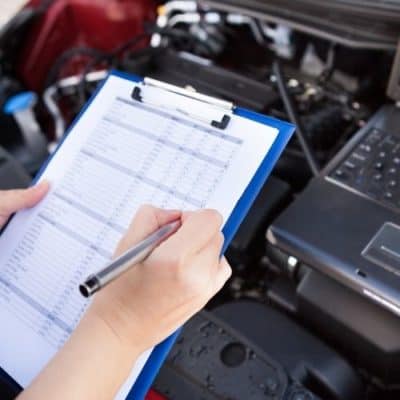When it comes to car repair, one of the last things a car owner wants to hear is, “It’s the transmission.” Unfortunately, transmission repairs have gotten a bad reputation because they tend to be pretty costly. Yet when your vehicle’s transmission needs to be repaired, you do need to tackle the job to keep things moving. Being able to spot problems can help you get service in a timely manner, and knowing what issues develop can help you avoid some of them and protect your transmission.
-
- Clogged Transmission Fluid Filter
Your transmission has a fluid filter similar to your oil filter. It helps keep the transmission fluid clean and free of debris. Over time it can pick up grit and grime, and that can clog up the filter. When the transmission fluid filter is clogged, the fluid can’t flow through freely. This prevents it from doing its job of lubricating and cooling the transmission. The end result is a transmission that completely fails or overheats, which means a costly repair bill. Keep the transmission fluid filter in good repair to prevent this problem.
-
- Transmission Fluid Quality Issues
If the transmission fluid filter is working fine, but the fluid itself is not clean and at an appropriate level, your transmission will suffer. That’s why car owners need to check transmission fluid levels regularly. In addition, routine transmission fluid flushes can help prevent problems with the transmission. If the fluid levels drop too low, they can’t keep the transmission cool and lubricated. Similarly, if they start to break down or get full of gunk, you are going to have problems with your transmission.
-
- Transmission Fluid Leaks
It’s important to fix a transmission fluid leak quickly because failure to do so could lead to low transmission fluid levels, and consequently, damage from overheating. When levels drop low, they cause problems that can lead to transmission failure. There are many types of transmission fluid leaks but if you know what to look for, transmission fluid leaks are easy to spot. Transmission fluid is typically red, so you can see it on the ground underneath your car. Small leaks can show up near the drain plug, so go under your engine and look.
-
- Worn Clutches
When the clutches in your transmission start to wear out, you will notice that your engine is revving too high. Low transmission fluid or water intrusion into the transmission can lead to this issue. If you can replace the clutches or other parts inside the transmission at the first sign of this problem, you may be able to avoid a full transmission failure.
-
- Lack of Vehicle Maintenance
Many of these issues come down to a lack of maintenance on a vehicle. The fluid filter, fluid quality, and fluid levels are all checked when you have your routine maintenance appointment. By having your vehicle’s transmission serviced regularly, you will be able to protect against these serious concerns. Check with your vehicle’s owner’s manual to see when service is recommended, or contact My Transmission Experts to learn what a recommended service schedule would be for your particular vehicle.
Remember, your vehicle’s transmission is a complex piece of equipment. You need to take proper care of it to keep it running at its best by following the factory recommended maintenance schedule. By avoiding these common problems through routine maintenance, you will have a transmission that serves you well for many miles. If you are noticing problems with your transmission, give My Transmission Experts a call for service.
SEE ALSO
4 Types of Transmission Leaks + Cost & Time to Repair
Transfer Case Maintenance & Repair
What’s the Going Rate to Fix a Transmission Leak?
Transmission Valve Body Replacement
Expert Transmission Rebuild Shop
Remanufactured Transmissions with Warranty
How Often Should I Change My Transmission Fluid?
































